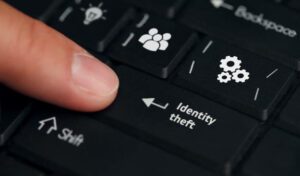Identity theft has become an increasingly prevalent issue in today’s digital world. It refers to the fraudulent acquisition of someone’s personal or financial information for the purpose of conducting unauthorized transactions or committing crimes in their name. While we often associate identity theft with cybercrime and online activities, it’s important to remember that physical objects in our everyday lives can also be used as a means to steal our identities. Let’s explore some of the everyday objects that can lead to identity theft and what you can do to protect yourself.
Mail And Documents
One of the easiest ways for identity thieves to steal personal information is by rummaging through your mail or documents. This can include bills, bank statements, credit card offers, and other sensitive information that may be lying around your home. Make sure to shred any documents that contain personal information before throwing them away.
Wallets And Purses
Your wallet or purse is likely to contain some of your most important personal information, including your driver’s license, credit and debit cards, and social security card. If someone steals your wallet or purse, they can easily use this information to commit identity theft. To avoid this, make sure to keep your wallet or purse close to you at all times and consider investing in an RFID-blocking wallet or purse to prevent electronic theft. Unless needed, leave your social security card at home, in a secure manner.
Cell Phones And Other Electronic Devices
Smartphones and other electronic devices can contain a lot of sensitive information, including your contacts, messages, emails, and login credentials for various accounts. Make sure to keep your phone locked with a password, PIN, or biometric authentication to prevent unauthorized access. Also, be careful when using public Wi-Fi networks, as they can be a hotbed for cybercrime.
Old Computers And Hard Drives
If you’re planning on getting rid of an old computer or hard drive, make sure to wipe all of the personal data from it first. Simply deleting files is not enough, as they can still be recovered with specialized software. Instead, use a data wiping tool to completely erase all of the data from the device.
Social Media Profiles
While not a physical object, your social media profiles can provide a treasure trove of personal information to identity thieves. This can include your full name, date of birth, address, phone number, and even your mother’s maiden name (a common security question). Make sure to limit the amount of personal information you share on social media and adjust your privacy settings to control who can see your posts and profile information.
Credit And Debit Cards
Credit and debit card skimming is a common form of identity theft that involves stealing your card information with a special device known as a skimmer. This can happen when you swipe your card at a gas pump, ATM, or other card reader. To protect yourself, try to use ATMs and gas pumps that are located in well-lit areas and have security cameras. Also, regularly check your account statements for any unauthorized transactions.
Conclusion
Identity theft is a serious issue that can have long-lasting consequences for its victims. By being aware of everyday objects that can lead to identity theft and taking steps to protect yourself, you can greatly reduce your risk of becoming a victim. Remember to shred sensitive documents, keep your personal items close to you, secure your electronic devices, wipe your old computers and hard drives, limit your social media sharing, and be cautious when using your credit and debit cards.
